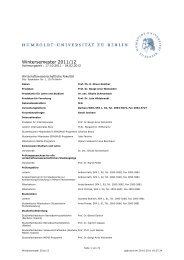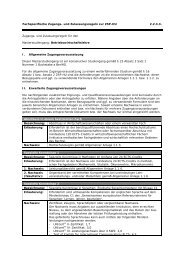Measuring the Effects of a Shock to Monetary Policy - Humboldt ...
Measuring the Effects of a Shock to Monetary Policy - Humboldt ...
Measuring the Effects of a Shock to Monetary Policy - Humboldt ...
You also want an ePaper? Increase the reach of your titles
YUMPU automatically turns print PDFs into web optimized ePapers that Google loves.
Bayesian FAVARs with Agnostic Identification 31<br />
This is an important hint, which is very relevant for <strong>the</strong> implementation in<strong>to</strong> Matlab, and<br />
was found in Eliasz [2005] but was not explicitly stated in BBE [2005]. The state space<br />
model is linear and Gaussian, hence we have:<br />
FT | ˜<br />
XT , θ ∼ N(FT |T , PT |T )<br />
Ft | Ft+1 ˜<br />
XT , θ ∼ N(Ft|t,Ft+1, Pt|t,Ft+1)<br />
where <strong>the</strong> first holds for <strong>the</strong> Kalman filter for t = 1, . . . , T and <strong>the</strong> second holds for <strong>the</strong><br />
Kalman smoo<strong>the</strong>r for t = T − 1, T − 2, . . . , 1. The derivation <strong>of</strong> <strong>the</strong> Kalman filter and<br />
smoo<strong>the</strong>r can be found in an elaborate manner in Eliasz [2005], <strong>the</strong>refore I do not repeat<br />
it here at this place.<br />
Inference on <strong>the</strong> parameters θ<br />
Drawing from <strong>the</strong> conditional 30 distribution p(θ | ˜ XT , ˜ FT )<br />
This part refers <strong>to</strong> <strong>to</strong> observation equation <strong>of</strong> <strong>the</strong> state space model which conditional on<br />
<strong>the</strong> estimated fac<strong>to</strong>rs and <strong>the</strong> data given specifies <strong>the</strong> distribution <strong>of</strong> Λ and R. Here we<br />
can apply equation by equation OLS in order <strong>to</strong> obtain ˆ Λ and ê. This is feasible due <strong>to</strong><br />
<strong>the</strong> fact that <strong>the</strong> errors are uncorrelated. According <strong>to</strong> <strong>the</strong> specification by BBE we also<br />
assume a proper (conjugate) but diffuse Inverse-Gamma(3,0.001) prior for Rii. Note that<br />
R is assumed <strong>to</strong> be diagonal. The posterior <strong>the</strong>n has <strong>the</strong> following form:<br />
.<br />
Rii | XT , FT ∼ iG( ¯ Rii, T + 0.001)<br />
where ¯ Rii = 3 + ê ′ iêi + ˆ Λ ′ i[M −1<br />
0 + ( F ′ T (i) F (i)<br />
T ) −1 ] −1Λi ˆ and M −1<br />
0<br />
denoting <strong>the</strong> variance<br />
parameter in <strong>the</strong> prior on <strong>the</strong> coefficients <strong>of</strong> <strong>the</strong> i-th equation <strong>of</strong> Λi. The normalization<br />
discussed in section (4) in order <strong>to</strong> identify <strong>the</strong> fac<strong>to</strong>rs and <strong>the</strong> loadings separately re-<br />
quires <strong>to</strong> set M0 = I. Conditional on <strong>the</strong> drawn value <strong>of</strong> Rii <strong>the</strong> prior on <strong>the</strong> fac<strong>to</strong>r<br />
loadings <strong>of</strong> <strong>the</strong> i-th equation is Λ prior<br />
i N(0, RiiM −1<br />
0 ). The regressors <strong>of</strong> <strong>the</strong> i-th equation<br />
are represented by ˜ F (i)<br />
T . The values <strong>of</strong> Λi are drawn from <strong>the</strong> posterior N( ¯ Λi, Rii ¯ M −1<br />
i )<br />
30 The following part is very close <strong>to</strong> BBE [2005]




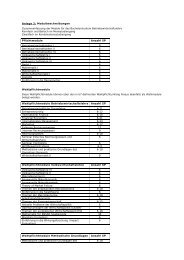

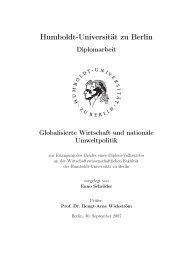
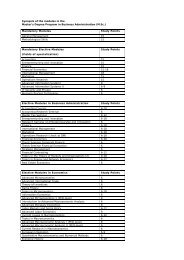
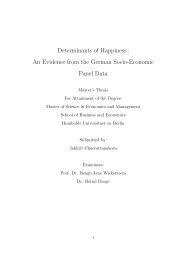
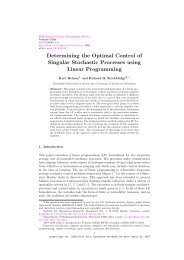
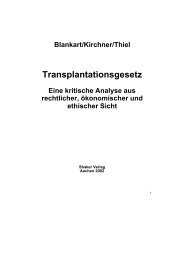


![[Text eingeben] [Text eingeben] Lebenslauf Anna-Maria Schneider](https://img.yumpu.com/16300391/1/184x260/text-eingeben-text-eingeben-lebenslauf-anna-maria-schneider.jpg?quality=85)

